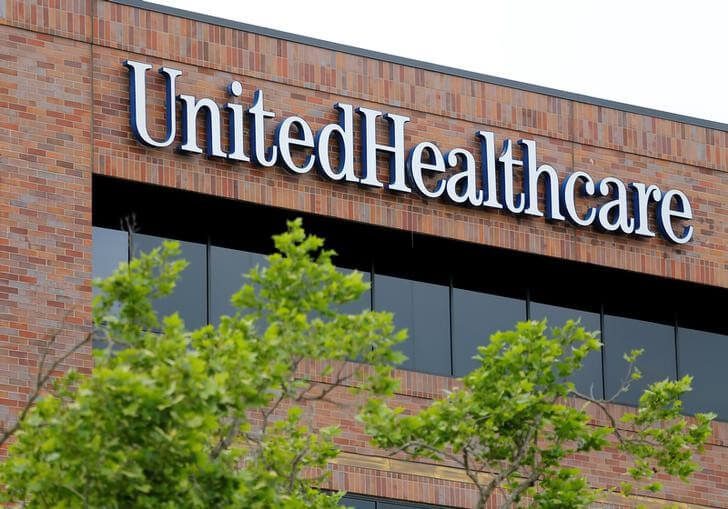How to Get Affordable Health Insurance In 2024?
Affordable health insurance is a crucial aspect of maintaining overall well-being. As medical costs continue to rise, navigating the complex landscape of insurance options can be challenging. “How to Get Affordable Health Insurance” This article aims to guide you through the process of obtaining affordable health insurance, offering valuable insights and practical tips.
Health insurance is not just a financial safety net; it’s a key component of proactive healthcare management. In today’s world, where medical expenses can be exorbitant, having access to affordable health insurance is more critical than ever. However, finding a plan that suits your needs and budget can be perplexing, given the myriad of options available. Let’s delve into the intricacies of securing affordable health insurance and ensure you make informed decisions.
Before embarking on the journey to find affordable health insurance, it’s essential to understand the basics. Health insurance typically covers medical expenses, including hospitalization, prescription medications, and preventive care. Different plans offer varying degrees of coverage, and comprehending the fundamental terms will empower you to make informed choices.
Contents
Understanding Health Insurance
Understanding health insurance is crucial for navigating the complex landscape of healthcare coverage. Health insurance is a contractual arrangement between an individual and an insurance provider, designed to mitigate the financial risks associated with medical expenses. Key components include premiums, the regular payments to maintain coverage, and deductibles, the amount individuals pay out-of-pocket before insurance coverage kicks in.
Coverage can extend to various medical services, including hospital stays, doctor visits, prescription medications, preventive care, and more. Policies may also include copayments and coinsurance, representing the individual’s share of costs for covered services.
Health insurance plans often have networks of healthcare providers, and utilizing in-network services is generally more cost-effective.

Health insurance can be obtained through employers, government programs like Medicaid or Medicare, or individual marketplaces. The Affordable Care Act (ACA) introduced standardized plans and eliminated pre-existing condition exclusions, making coverage more accessible. Understanding policy limitations, exclusions, and pre-authorization requirements is crucial.
Regular review of policy details, staying informed about changes in coverage, and seeking assistance from insurance professionals contribute to better understanding and utilization of health insurance. Being informed empowers individuals to make informed decisions, manage healthcare costs, and ensure access to necessary medical services.
Types of health insurance plans
Navigating through the plethora of health insurance plans requires an understanding of their types. Whether it’s an HMO, PPO, or high-deductible plan, each comes with its unique features and cost structures. We’ll explore these options to help you discern which one aligns with your healthcare needs and financial capabilities.
Health insurance plans come in various types, each with unique features and coverage structures:
Health Maintenance Organization (HMO)
Requires a primary care physician referral for specialist visits and typically has a designated network of healthcare providers. A Health Maintenance Organization (HMO) is a type of health insurance plan that requires members to choose a primary care physician and get referrals to see specialists. Typically, it has a network of preferred providers.
Preferred Provider Organization (PPO)
Offers more flexibility in choosing healthcare providers, allowing individuals to see out-of-network specialists at a higher cost. A Preferred Provider Organization (PPO) is a type of health insurance plan that offers flexibility in choosing healthcare providers. While there is a network of preferred providers, individuals can still seek care outside the network, albeit at a higher cost.
Exclusive Provider Organization (EPO)
Combines aspects of HMOs and PPOs, with a network of preferred providers and limited coverage for out-of-network services. An Exclusive Provider Organization (EPO) is a health insurance plan that combines features of HMOs and PPOs. It typically has a network of preferred providers, and coverage is limited to these providers.
High Deductible Health Plan (HDHP)
Involves higher deductibles and lower premiums, often used with Health Savings Accounts (HSAs) for tax advantages. A High Deductible Health Plan (HDHP) is a type of health insurance with higher deductibles and lower premiums. It is often used in conjunction with Health Savings Accounts (HSAs).
Point of Service (POS)
Combines features of HMO and PPO plans, allowing primary care physician referrals and out-of-network coverage at a higher cost. A Point of Service (POS) health insurance plan combines features of HMOs and PPOs. It requires a primary care physician referral for specialists, similar to HMOs, but also allows out-of-network services, though at a higher cost, like PPOs.
The cost of health insurance is influenced by various factors. From your age and location to your medical history and lifestyle choices, insurers consider multiple variables when determining your premiums. By comprehending these factors, you can strategize ways to obtain cost-effective coverage without compromising on essential benefits.
Several factors influence insurance premiums across various types of insurance, including health, auto, and home insurance. Some key factors include:
- Age and Gender: Younger individuals often pay higher premiums. Gender can also impact rates in some cases.
- Health Status: For health insurance, pre-existing conditions and overall health can influence premiums.
- Occupation: Some professions are associated with higher risks and may lead to higher premiums.
- Location: Geographic location affects premiums. Areas prone to natural disasters or high crime rates may have higher insurance costs.
- Coverage Type: The extent of coverage, including deductibles and policy limits, directly influences premium costs.
- Claims History: Individuals with a history of frequent claims may face higher premiums.
- Driving Record: In auto insurance, a clean driving record generally leads to lower premiums.
- Credit Score: Some insurers use credit scores as a factor in determining premiums.
- Type of Vehicle/Property: In auto and home insurance, factors like the make of the vehicle or the construction of the home can impact premiums.
- Lifestyle Choices: Smoking, for example, can lead to higher health and life insurance premiums.
- Policyholder’s Behavior: Safe driving habits, maintaining a healthy lifestyle, and other responsible behaviors can positively impact premiums.
Understanding these factors is essential for individuals to make informed decisions and take steps to potentially reduce their insurance costs. Insurers use a combination of these factors to assess risk and determine appropriate premium rates for policyholders.
Tips for Finding Affordable Health Insurance
To find affordable health insurance, consider comparing quotes from multiple insurers, exploring government-sponsored programs, and choosing a plan with a higher deductible for lower premiums. Assess your healthcare needs to avoid overpaying for unnecessary coverage. Investigate available subsidies or tax credits based on income.
Utilize employer-sponsored plans if available. Maintain a healthy lifestyle to potentially qualify for lower rates. Consult with insurance professionals for guidance. Regularly review and adjust coverage based on changing needs. Being proactive in researching options and understanding policy details helps secure cost-effective health insurance while maintaining necessary coverage.
Researching available options
The key to finding affordable health insurance lies in diligent research. We’ll provide insights into where to look, online resources to explore, and factors to consider when comparing different plans. Researching available health insurance options is essential. Compare plans from different insurers, considering premiums, deductibles, and coverage. Explore government-sponsored programs and subsidies. Seek advice from insurance professionals for a comprehensive understanding of available choices tailored to your needs and budget.
Utilizing government programs
Government assistance programs can be invaluable in securing affordable health insurance. This section will outline the eligibility criteria for subsidies, how to apply for assistance, and the role of the Affordable Care Act (ACA) in making healthcare accessible to a broader population. Utilizing government programs, such as Medicaid or Medicare, can provide access to affordable health insurance options based on eligibility criteria.
Exploring employer-sponsored plans
Many individuals overlook the potential benefits of employer-sponsored health insurance. We’ll discuss the advantages of these plans, how to evaluate them, and what to do if your employer doesn’t offer coverage. Exploring employer-sponsored plans is crucial for comprehensive health coverage. Check offerings, assess benefits, and inquire about employer contributions to find a cost-effective and tailored insurance solution through your workplace.
How to Get Affordable Health Insurance
To obtain affordable health insurance, follow these steps. Begin by researching available options from different insurers, and comparing premiums, deductibles, and coverage details. Explore government-sponsored programs like Medicaid or Medicare and check eligibility for subsidies or tax credits. Additionally, consider employer-sponsored plans, as they often offer cost-effective coverage.
Assess your healthcare needs and opt for plans that align with your requirements. Higher deductibles may lower premiums, but ensure the plan provides.

Maintain a healthy lifestyle, as some insurers offer discounts for healthy behaviors. Utilize preventive care to manage long-term health and potentially reduce overall costs. Regularly review your insurance needs, adjusting coverage as necessary. Seek guidance from insurance professionals for personalized advice. Adequate coverage for essential services.
By combining these strategies and staying proactive in your approach, you can find an affordable health insurance plan that meets your financial constraints while providing comprehensive coverage for your healthcare needs.
Comparing Insurance Plans
Comparing insurance plans is vital for finding the most suitable coverage. Evaluate premiums, deductibles, and coverage details. Consider your healthcare needs and potential out-of-pocket costs. Assess network providers and check for additional benefits. Look into government subsidies or employer-sponsored options. Seek advice from insurance professionals if needed.
Regularly review and adjust your plan as circumstances change. Thorough research ensures you select a cost-effective insurance plan that aligns with your specific requirements, providing financial security and access to necessary healthcare services.
Understanding coverage details
Digging into the fine print of insurance policies is crucial for making informed decisions. This section will guide you in understanding coverage details, including in-network versus out-of-network providers and what services are typically covered. Understanding coverage details is crucial. Review policy terms, limits, and exclusions to ensure a comprehensive understanding of your insurance coverage.
Assessing deductibles and copayments
Unraveling the mysteries of deductibles and copayments is essential for budgeting your healthcare expenses. We’ll break down these terms, helping you navigate the financial aspects of your health insurance plan. Assessing deductibles and copayments is essential. Understand the amounts you must pay out-of-pocket before insurance coverage starts and the ongoing costs for healthcare services.
Considering network coverage
The scope of your insurance network can significantly impact your out-of-pocket expenses. We’ll provide tips on evaluating network coverage, ensuring you have access to quality healthcare providers without breaking the bank. Considering network coverage is crucial. Ensure healthcare providers within the plan’s network to maximize benefits and minimize out-of-pocket expenses.
Frequently Ask Questions
Which is the least expensive type of health insurance?
First, check to see if you qualify for Medicaid coverage, which will always be the lowest-cost option available. If you are not eligible, then using ACA subsidies for individual health insurance coverage is the next most affordable option.
How much is a good health insurance plan?
A typical family premium (two adults in their 40s and two children under 10) can vary from £700 to £1,800 a year. Premiums will rise every year and with age. So by the time you’re older, and more likely to need hospital treatment, you might not be able to afford it. Chronic illnesses aren’t usually covered.
Is it worth paying for private health insurance?
If you are worried about the length of NHS waiting lists, then private health insurance could provide you with priceless peace of mind. Alternatively, if you are more relaxed and have faith that the NHS will be there when you need it, you may not consider it a priority or worthwhile expense.
What is the most expensive form of health care?
Platinum health insurance is the highest-priced level of health insurance you can buy. You pay expensive monthly premiums. In exchange, you get a low deductible, out-of-pocket maximum, copays, and coinsurance. A Platinum health plan will best fit you if you have serious or chronic health concerns.
Conclusion
Securing affordable health insurance requires a strategic approach. Research available options, compare plans, and assess your healthcare needs. Utilize government programs, explore employer-sponsored plans, and consider higher deductibles for lower premiums. Take advantage of subsidies and maintain a healthy lifestyle for potential discounts. Regularly review and adjust coverage as circumstances change. Seeking advice from insurance professionals ensures informed decisions.







